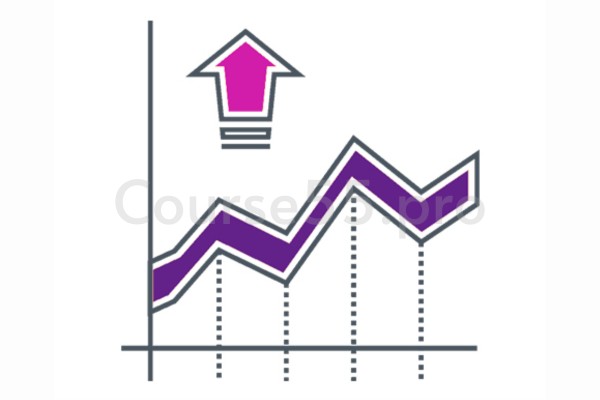DAY TRADE (LONG & SHORT) STRATEGIES PACKAGE – The Chartist
$1,530.00 Original price was: $1,530.00.$272.00Current price is: $272.00.
Download DAY TRADE (LONG & SHORT) STRATEGIES PACKAGE – The Chartist, check content proof here:
Evaluation of The Chartist’s Day Trading Strategies Package
Both new and experienced traders look for that elusive edge in the constantly changing world of trading, where the difference between profit and loss may be extremely small. The appeal of day trading, especially when done with long and short methods, offers an enticing chance to profit from market swings, whether they be upward or negative. The Chartist’s day trading methods package aims to simplify this process by providing traders with a methodical and technical approach to negotiating the volatile stock market. However, is this tactic only a passing fad or the secret to trading success? Let’s examine The Chartist’s services in further detail and discover their full potential.
Long/Short Day Trade Strategy
At the heart of The Chartist’s approach lies the long/short day trade strategy, a mechanism designed to balance risk while pursuing potential profits. This strategy is symbiotic, thriving in the face of market fluctuations. By engaging in long positions with solid fundamentals and simultaneously short-selling stocks exhibiting weakening fundamentals, traders aim to shield their capital against market downturns. However, unlike traditional methods that delve into fundamental analysis, The Chartist’s strategy emphasizes a technical-centric approach. The focus remains on real-time market movements, allowing traders to pivot swiftly and seize opportunities as they arise.
Metrics like the Relative Strength Index (RSI), a measure that monitors price momentum, are crucial to the approach. Trading is triggered by certain criteria; for example, purchasing when the RSI falls below 20, which indicates that a stock is oversold and ready for a reversal, is a popular trigger. By depending on technical indicators, traders are able to base their judgments on current market performance rather than being influenced by more general economic storylines.
The effectiveness of this strategy is further supported by statistical data. The long/short approach yielded a respectable 14.6% total return during certain trading sessions. Looking more closely, the performance figures show that short positions outperformed, making money around 43.5% of the time, while long positions were profitable on about 32.5% of trading days. The synergy of these strategies enables a combined success rate, leading to profits on an impressive 65% of trading days. This harmonious relationship between long and short positions highlights the potential for traders to navigate even treacherous market conditions with confidence.
Performance Metrics
Understanding the performance metrics of The Chartist’s strategies illuminates their viability in day trading. A key indicator of success is the non-compounded return, which stands at 11% based on historical data analysis. This figure serves as a benchmark, providing insight into the sustainable profitability of the strategy over time. However, as with any mechanism that hinges on market performances, the potential for loss exists, best illustrated by the historically recorded maximum drawdown of 14%. Such metrics underscore the inherent risks that accompany day trading, cautioning traders to remain vigilant and strategize accordingly.
Moreover, when examining the relationship between long and short positions, a positive correlation coefficient emerges, albeit a low one. This indicates that the two strategies can operate independently of one another, a feature valuable in enhancing overall portfolio performance. For traders, this independence underscores the importance of diversification; engaging in long and short positions simultaneously can offer a buffer against significant losses during unpredictable market fluctuations.
Implementation of the System
It is recommended that traders use The Chartist’s technique to execute up to 20 positions, allocating 10% of their money to each trade. In addition to encouraging a diversified risk profile, this allocation gives traders the ability to actively participate in potentially profitable opportunities inside the Russell-1000 universe, an index that includes thousands of the biggest publicly listed firms in the US. This kind of diversity increases the likelihood of making money in a variety of industries while reducing the risk connected with specific equities.
Traders are urged to follow established tactics and exercise strict discipline while putting this strategy into practice. A key component of effective day trading is making well-informed decisions, which is made possible by this methodical technique, which reduces emotional trading urges. By harnessing allocated capital wisely, traders can maximize engagement with the market while safeguarding themselves against unforeseen downturns.
Technical Tools and Indicators
To construct an efficient day trading system, The Chartist emphasizes the imperative of utilizing technical tools and indicators. Notably, the Average True Range (ATR) is highlighted for gauging price volatility, facilitating informed decisions on entry and exit points. In tandem, the Rate of Change (ROC) can be employed to rank trading signals and prioritize trades based on momentum, further refining the trader’s approach.
This technical groundwork aligns seamlessly with the philosophy of focusing on price action. Traders are encouraged to immerse themselves in the moment to respond to market signals with agility and precision rather than becoming ensnared in the complexities of external economic influences. Such an approach fosters an environment where traders can flourish, provided they possess the tools and knowledge to interpret and act upon market movements effectively.
Overarching Considerations
It is crucial to employ caution when using The Chartist’s method, even if it is becoming more and more popular among retail traders due to its apparent accessibility and ease of use. Experts advise that a thorough grasp of the fundamental market dynamics must be combined with dependence on technical analysis. Due to the inherent unpredictability of markets, expected trade patterns may occasionally be disrupted by variables including geopolitical events, regulatory changes, and changes in economic policy.
Any trading strategy’s effectiveness can vary greatly, especially when market volatility is strong. For example, the divergent results during significant downturn years highlight the necessity for traders to remain flexible. A strategy that thrives during bullish trends may falter in bearish markets, highlighting the necessity for flexibility and an ability to tailor one’s approach based on prevailing conditions.
In conclusion
In conclusion, The Chartist’s bundle of long/short day trading methods offers a flexible framework that can adjust to the fluctuating circumstances of contemporary financial markets. With the possibility for uncorrelated returns, this technical foundation gives traders the skills they need to successfully negotiate the challenges of day trading. As with any trading strategy, though, astute users need to emphasize a comprehensive trading education and stay mindful of the hazards involved.
One might increase their chances of success in this exciting but difficult effort by embracing both the art and science of trading. The Chartist technique presents an alluring proposal situated at the nexus of technology and strategy, regardless of whether you are an experienced trader seeking to improve your approach or a novice hoping for your breakthrough.

Frequently Asked Questions:
Business Model Innovation:
Embrace the concept of a legitimate business! Our strategy revolves around organizing group buys where participants collectively share the costs. The pooled funds are used to purchase popular courses, which we then offer to individuals with limited financial resources. While the authors of these courses might have concerns, our clients appreciate the affordability and accessibility we provide.
The Legal Landscape:
The legality of our activities is a gray area. Although we don’t have explicit permission from the course authors to resell the material, there’s a technical nuance involved. The course authors did not outline specific restrictions on resale when the courses were purchased. This legal nuance presents both an opportunity for us and a benefit for those seeking affordable access.
Quality Assurance: Addressing the Core Issue
When it comes to quality, purchasing a course directly from the sale page ensures that all materials and resources are identical to those obtained through traditional channels.
However, we set ourselves apart by offering more than just personal research and resale. It’s important to understand that we are not the official providers of these courses, which means that certain premium services are not included in our offering:
- There are no scheduled coaching calls or sessions with the author.
- Access to the author’s private Facebook group or web portal is not available.
- Membership in the author’s private forum is not included.
- There is no direct email support from the author or their team.
We operate independently with the aim of making courses more affordable by excluding the additional services offered through official channels. We greatly appreciate your understanding of our unique approach.
Be the first to review “DAY TRADE (LONG & SHORT) STRATEGIES PACKAGE – The Chartist” Cancel reply
You must be logged in to post a review.

















Reviews
There are no reviews yet.